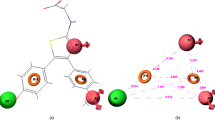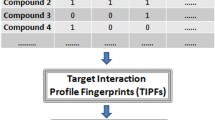Abstract
A new structure–activity relationship model predicting the probability for a compound to inhibit human cytochrome P450 3A4 has been developed using data for >800 compounds from various literature sources and tested on PubChem screening data. Novel GALAS (Global, Adjusted Locally According to Similarity) modeling methodology has been used, which is a combination of baseline global QSAR model and local similarity based corrections. GALAS modeling method allows forecasting the reliability of prediction thus defining the model applicability domain. For compounds within this domain the statistical results of the final model approach the data consistency between experimental data from literature and PubChem datasets with the overall accuracy of 89%. However, the original model is applicable only for less than a half of PubChem database. Since the similarity correction procedure of GALAS modeling method allows straightforward model training, the possibility to expand the applicability domain has been investigated. Experimental data from PubChem dataset served as an example of in-house high-throughput screening data. The model successfully adapted itself to both data classified using the same and different IC50 threshold compared with the training set. In addition, adjustment of the CYP3A4 inhibition model to compounds with a novel chemical scaffold has been demonstrated. The reported GALAS model is proposed as a useful tool for virtual screening of compounds for possible drug-drug interactions even prior to the actual synthesis.







Similar content being viewed by others
References
Wienkers LC, Heath TG (2005) Nat Rev Drug Discov 4:825–833
Rendic S, Di Carlo FJ (1997) Drug Metab Rev 29:413–580
Kerns E, Di L (2008) Drug-like properties: concepts, structure design and methods: from ADME to toxicity optimization. Academic Press, San Diego
Miller VP, Stresser DM, Blanchard AP, Turner S, Crespi CL (2000) Ann NY Acad Sci 919:26–32
Cali JJ, Ma D, Sobol M, Simpson DJ, Frackman S, Good TD, Daily WJ, Liu D (2006) Expert Opin Drug Metab Toxicol 2:629–645
Zlokarnik G, Grootenhuis PDJ, Watson JB (2005) Drug Discov Today 10:1443–1450
Walsky RL, Obach RS (2004) Drug Metab Dispos 32:647–660
Zuegge J, Fechner U, Roche O, Parrott N, Engkvist O, Schneider G (2002) Quant Struct Act Relat 21:249–256
Ekins S, Berbaum J, Harrison RK (2003) Drug Metab Dispos 31:1077–1080
Kriegl JM, Arnhold T, Beck B, Fox T (2005) J Comput Aided Mol Des 19:189–201
Kriegl JM, Eriksson L, Arnhold T, Beck B, Johansson E, Fox T (2005) Eur J Pharm Sci 24:451–463
Arimoto R, Prasad M, Gifford EM (2005) J Biomol Screen 10:197–205
Mao B, Gozalbes R, Barbosa F, Migeon J, Merrick S, Kamm K, Wong E, Costales C, Shi W, Wu C, Froloff N (2006) J Chem Inf Model 46:2125–2134
Jensen BF, Vind C, Padkjaer SB, Brockhoff PB, Refsgaard HHF (2007) J Med Chem 50:501–511
Gleeson MP, Davis AM, Chohan KK, Paine SW, Boyer S, Gavaghan CL, Arnby CH, Kankkonen C, Albertson N (2007) J Comput Aided Mol Des 21:559–573
Choi I, Kim SY, Kim H, Kang NS, Bae MA, Yoo S, Jung J, No KT (2009) Eur J Med Chem 44:2354–2360
Weaver S, Gleeson MP (2008) J Mol Graph Model 26:1315–1326
Ekins S, Bravi G, Binkley S, Gillespie JS, Ring BJ, Wikel JH, Wrighton SA (1999) J Pharmacol Exp Ther 290:429–438
Wang RW, Newton DJ, Liu N, Atkins WM, Lu AY (2000) Drug Metab Dispos 28:360–366
Lu P, Lin Y, Rodrigues AD, Rushmore TH, Baillie TA, Shou M (2001) Drug Metab Dispos 29:1473–1479
Ekroos M, Sjögren T (2006) Proc Natl Acad Sci USA 103:13682–13687
Galetin A, Clarke SE, Houston JB (2003) Drug Metab Dispos 31:1108–1116
Worth AP, Hartung T, Van Leeuwen CJ (2004) SAR QSAR Environ Res 15:345–358
Sazonovas A, Japertas P, Didziapetris R (2010) SAR QSAR Environ Res 21:127–148
Japertas P, Sazonovas A, Didziapetris R, Petrauskas A (2008) The 235th ACS National Meeting, New Orleans, LA
Stresser DM, Blanchard AP, Turner SD, Erve JC, Dandeneau AA, Miller VP, Crespi CL (2000) Drug Metab Dispos 28:1440–1448
Nomeir AA, Ruegg C, Shoemaker M, Favreau LV, Palamanda JR, Silber P, Lin CC (2001) Drug Metab Dispos 29:748–753
The PubChem Project. http://pubchem.ncbi.nlm.nih.gov/. Accessed 10 Jun 2008
Tetko IV (2002) J Chem Inf Comput Sci 42:717–728
Tetko IV (2002) Neur Proc Lett 16:187–199
Efron B (1979) Ann Statist 7:1–26
Katoh M, Nakajima M, Shimada N, Yamazaki H, Yokoi T (2000) Eur J Clin Pharmacol 55:843–852
Fawcett T (2006) Patt Recog Lett 27:861–874
Velaparthi U, Wittman M, Liu P, Carboni JM, Lee FY, Attar R, Balimane P, Clarke W, Sinz MW, Hurlburt W, Patel K, Discenza L, Kim S, Gottardis M, Greer A, Li A, Saulnier M, Yang Z, Zimmermann K, Trainor G, Vyas D (2008) J Med Chem 51:5897–5900
Algorithm Builder. ACD/Labs Inc., Toronto, ON, Canada. http://www.acdlabs.com
Japertas P, Didziapetris R, Petrauskas A (2002) Quant Struct Act Relat 21:23–37
R: A language and environment for statistical computing. R Foundation for Statistical Computing, Vienna. http://www.r-project.org/
Eng J (2006) ROC analysis: web-based calculator for ROC curves. http://www.jrocfit.org. Accessed 19 Jul 2010
ADME Suite. ACD/Labs Inc., Toronto, ON, Canada. http://www.acdlabs.com
Yano JK, Wester MR, Schoch GA, Griffin KJ, Stout CD, Johnson EF (2004) J Biol Chem 279:38091–38094
Korzekwa KR, Krishnamachary N, Shou M, Ogai A, Parise RA, Rettie AE, Gonzalez FJ, Tracy TS (1998) Biochemistry 37:4137–4147
Gleeson MP (2008) J Med Chem 51:817–834
Monostory K, Vereczkey L, Lévai F, Szatmári I (1998) Br J Pharmacol 123:605–610
Moon Y, Kim SY, Ji HY, Kim YK, Chae HJ, Chae SW, Lee HS (2007) Xenobiotica 37:246–259
Gleeson P, Bravi G, Modi S, Lowe D (2009) Bioorg Med Chem 17:5906–5919
Ishigami M, Honda T, Takasaki W, Ikeda T, Komai T, Ito K, Sugiyama Y (2001) Drug Metab Dispos 29:282–288
Tsukamoto I, Koshio H, Kuramochi T, Saitoh C, Yanai-Inamura H, Kitada-Nozawa C, Yamamoto E, Yatsu T, Shimada Y, Sakamoto S, Tsukamoto S (2009) Bioorg Med Chem 17:3130–3141
Ortiz de Montellano PR (1995) In: Cytochrome P450: structure, mechanism and biochemistry. Plenum Press, New York
Testa B (1995) The metabolism of drugs and other xenobiotics: biochemistry of redox reactions. Academic Press, San Diego
Zhou S, Yung Chan S, Cher Goh B, Chan E, Duan W, Huang M, McLeod HL (2005) Clin Pharmacokinet 44:279–304
Author information
Authors and Affiliations
Corresponding author
Rights and permissions
About this article
Cite this article
Didziapetris, R., Dapkunas, J., Sazonovas, A. et al. Trainable structure–activity relationship model for virtual screening of CYP3A4 inhibition. J Comput Aided Mol Des 24, 891–906 (2010). https://doi.org/10.1007/s10822-010-9381-1
Received:
Accepted:
Published:
Issue Date:
DOI: https://doi.org/10.1007/s10822-010-9381-1




